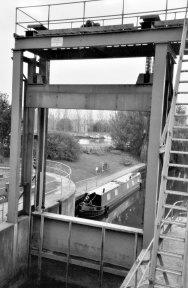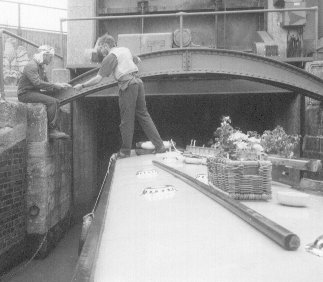The Middle Level is the network of drainage canals (combined with the course of the old River Nene) that keep East Anglia from reverting to a wetland bog. It was built in the 1650s by Dutch engineers led by Cornelius Vermuyden. A system of lodes (small canals) in the fields with pumps at the end brings the water into canals. These are often named after their original width from dyke (=levee) to dyke such as "the Hundred foot drain". Many of the canals can be navigated although some of the bridges are very low. There is no towpath but since most of the land is used for arable farming you can stop for the night pretty much anywhere. There is very little traffic on the Middle Level and on some of the smaller drains you can go for several days without coming across another boat. At its western end the Middle Level connects to the Northampton arm of the Grand Union Canal. At its eastern end there is a tidal link to the Great Ouse river.
The link between the Middle Level and the Great Ouse runs between the tiny Salters Lode lock and the mighty Denver Sluice. Between these two is a strech of tidal river that is bare mud at low tide and too high for the inner door of Salters Lode at high tide. Passage between the locks is controlled by the lock keeper at Denver and the two locks coordinate the openings. Normal passage can be made on most days and the locking times can be found by ringing Denver Lock. Boats that are longer than the lock (limit is about 60') can be got though by opening both gates at once at slack water but you should arrange this in advance! |

